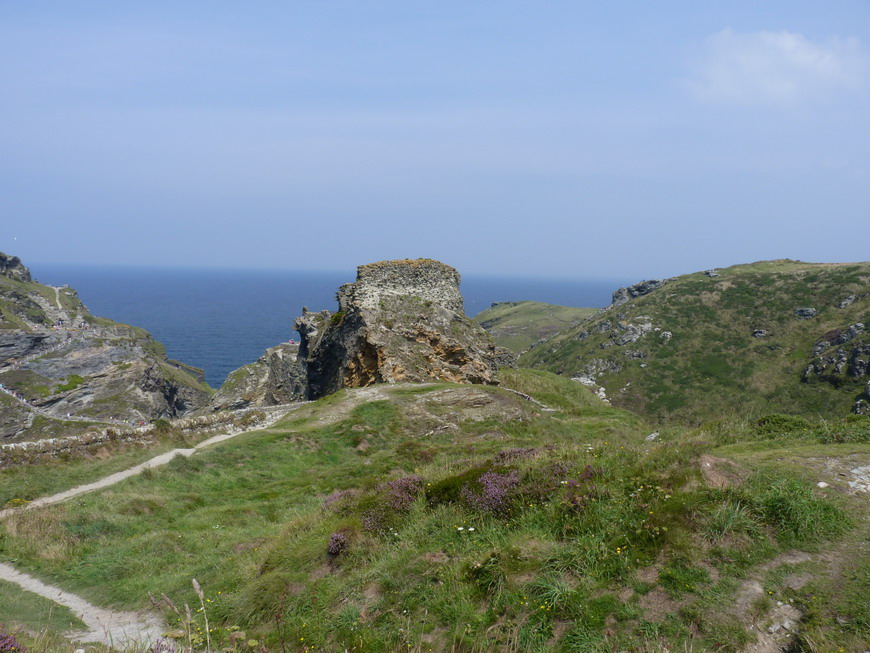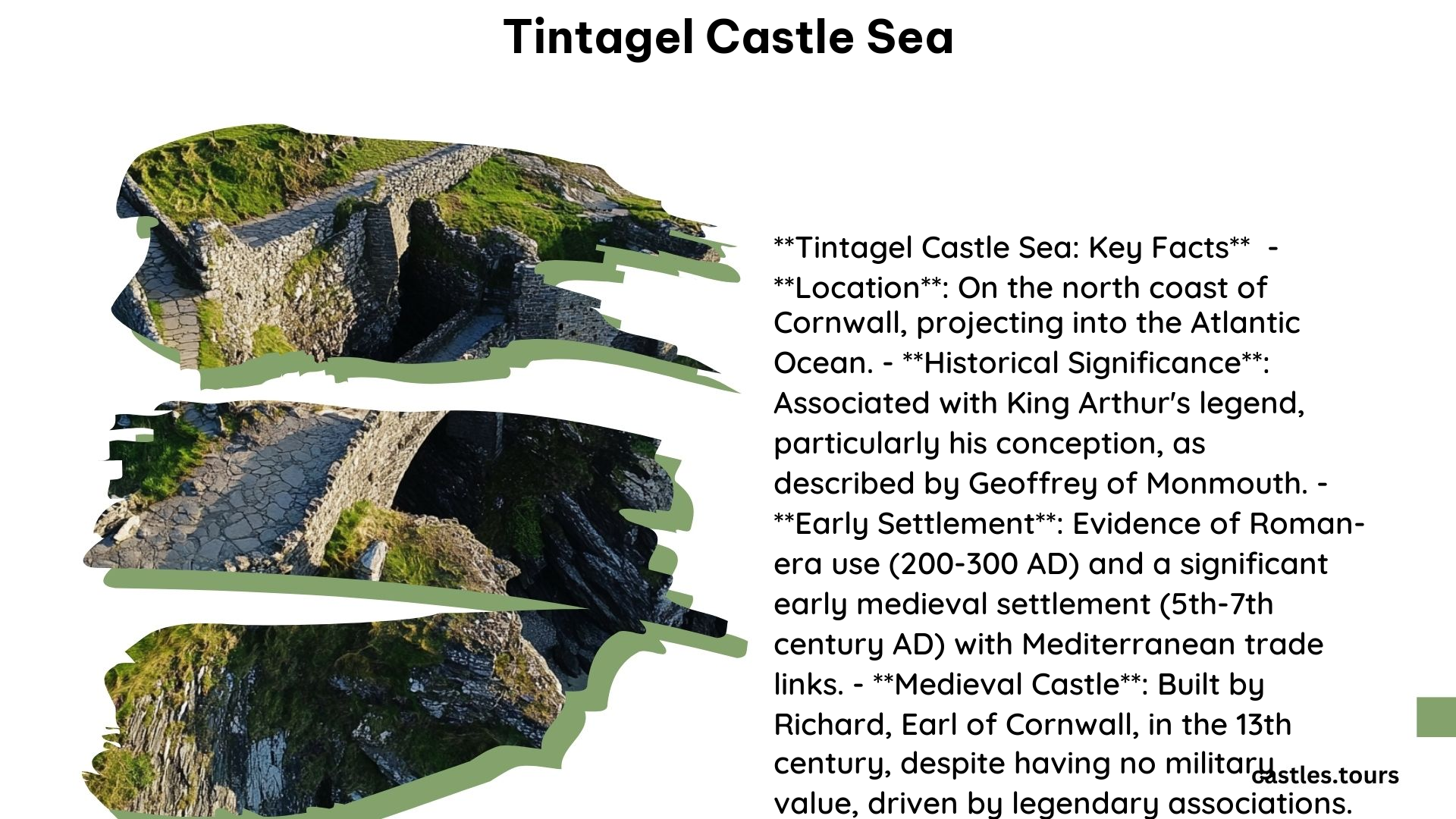The dramatic cliffs and crashing waves of the Cornish coastline have long been intertwined with the history and legends of Tintagel Castle. This iconic medieval fortress, perched precariously on a rocky headland, has captivated visitors for centuries, with its striking seaside setting playing a crucial role in its enduring appeal and historical significance.
What was the Historical Role of the Sea in Tintagel Castle?

 , licensed under CC BY-SA 2.0
, licensed under CC BY-SA 2.0The sea was instrumental in the medieval trade and prosperity of Tintagel Castle. From the mid-5th to the 7th century AD, the site was a significant trade center, with merchants exchanging goods as far away as the Mediterranean. Archaeological evidence suggests that the settlement was home to at least 100 buildings, indicating a thriving and economically important community that served as a residence for the area’s rulers.
The sea facilitated the import of luxury goods, such as pottery, which have been found on the site, highlighting Tintagel’s role as a hub of maritime commerce during this period. The castle’s strategic location on the Cornish coast allowed it to take advantage of these lucrative trade routes, contributing to its wealth and influence.
How does the Dramatic Clifftop Setting Contribute to Tintagel’s Arthurian Associations?

The dramatic clifftop setting of Tintagel Castle, with its jagged headland projecting into the Cornish sea, has long been a key factor in the site’s Arthurian associations. The castle’s precarious position and isolated nature fit well with the mythological narratives surrounding King Arthur, as described by the 12th-century writer Geoffrey of Monmouth.
The sea’s presence enhances the site’s sense of mystery and romance, adding to the allure of the Arthurian legends that have become inextricably linked with Tintagel. The castle’s dramatic setting above the crashing waves has been a source of inspiration for countless writers, artists, and historians, who have sought to capture the essence of this legendary place.
What Archaeological and Historical Evidence Supports Tintagel’s Maritime Connections?
Archaeological investigations at Tintagel have revealed a wealth of evidence supporting the site’s maritime connections and high-status occupation during the medieval period. Artifacts dating back to the Romano-British period have been found on the peninsula, although no definitive Roman-era structures have been identified.
More significantly, the discovery of writing and articles brought from Spain and the eastern Mediterranean indicates that Tintagel was a high-status settlement with significant maritime trade links. This evidence underscores the importance of the sea in the site’s history, as it facilitated the import of luxury goods and the exchange of ideas and cultural influences.
Practical Information for Visiting Tintagel Castle
Entry Fees:
– Adult entry: £17.60 (including donation)
– Child entry (5 and over): £10.60 (2022 prices)
Opening Hours and Accessibility:
– The site is managed by English Heritage, and it is advisable to book tickets online to guarantee entry, especially during peak season.
– There is limited wheelchair access due to the nature of the site, but a comprehensive access guide is available on the English Heritage website.
Parking and Transportation:
– Parking is available in pay and display car parks in Tintagel village, such as the King Arthur’s Car Park (PL34 0DA).
– A private landrover shuttle service is available for those who find the uphill walk challenging.
Facilities and Activities:
– The site includes a footbridge installed in 2019, which provides better accessibility and a safer route across the isthmus.
– Visitors can explore the ruins, Merlin’s Cave, and the surrounding coastline, as well as visit the castle cafe for refreshments.
References
- Tintagel Castle: History and Legend (English Heritage)
- Tintagel Castle, Cornwall: The Legend of Merlin and King Arthur (The Great Cornish Outdoors)
- Spotlight: Tintagel Castle (Wilderness England)
- Tintagel Castle (Wikipedia)
